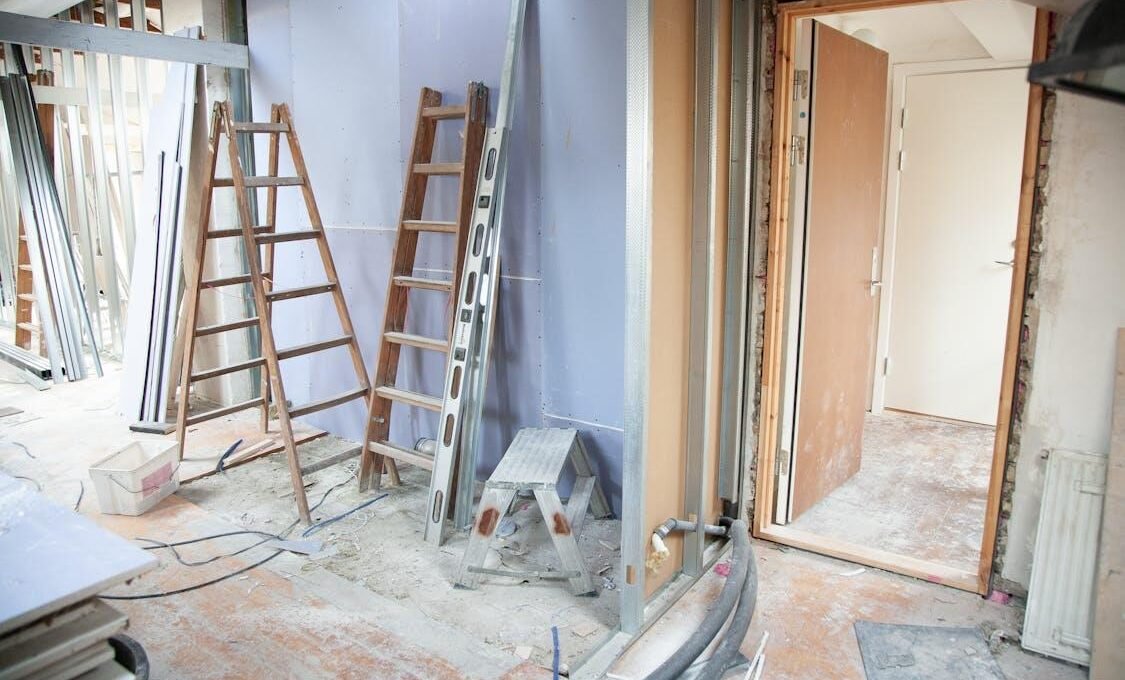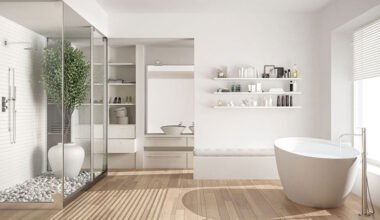Ever stood in your Florida home, watching your ceiling fan rattle slightly off-balance, and thought, “Maybe it’s time to fix up a few things around here”? You’re not alone. With heat, humidity, and a home that works overtime through long seasons, even the most laid-back Floridians eventually look around and notice a list of little improvements waiting to be done. In this blog, we will share simple home improvement ideas for everyday living.
Create Storage That Makes Sense
Clutter is the silent killer of peaceful homes. It creeps in through drawers, corners, closets, and countertops, making everything feel heavier and harder to manage. That’s why any improvement that adds smart storage is more than just a visual win—it’s a stress reliever.
Start small. Add hooks near the entryway for bags and keys. Use bins inside cabinets to separate cleaning supplies or pantry items. Install floating shelves in bathrooms or bedrooms where floor space is limited. Make use of vertical real estate wherever possible—it keeps things tidy without closing the room in.
In closets, adding a second hanging rod or shelf can double your usable space without knocking down a wall. Shoe racks, drawer dividers, and labeled baskets make it easier to find what you need when you need it.
Storage should feel effortless. When everything has a place, and that place makes sense, the house functions better. You spend less time searching, less time cleaning, and more time actually living.
Start with the Systems That Keep Things Running
Before you start updating colors or rearranging furniture, focus on what affects daily life. The infrastructure of your home—the parts you can’t see—sets the tone for how everything else functions. No one enjoys the thrill of discovering a slow leak under the sink right after buying new kitchen cabinets. That’s why starting with plumbing makes more sense than most people think.
A trusted Fort White Plumber can efficiently handle those hidden issues before they grow into expensive surprises. Whether it’s replacing outdated pipes, fixing that faucet that never stops dripping, or installing new water-saving fixtures, working with someone who knows the local conditions means you’re not just getting a patch job—you’re getting solutions that last. And when your plumbing is solid, the rest of your improvement efforts feel like progress instead of damage control.
Fixing plumbing isn’t glamorous, but it’s foundational. Good water pressure, functional drains, and leak-free fixtures quietly improve your home experience every day. It’s the kind of upgrade that doesn’t need to be flashy to be felt—like background music that makes everything else flow better.
Upgrade What You Use the Most
Not every project has to be a full remodel. The smartest home improvements are often the ones that make daily tasks easier or more pleasant. Think of the areas where you spend the most time or that see the most use: kitchen counters, entryways, bathroom storage, lighting. Small tweaks in these spaces deliver outsized benefits.
Start with lighting. Swapping out old bulbs for energy-efficient LEDs brightens the room, cuts down the power bill, and lasts years longer. Installing dimmers gives you more control over mood and function. It’s also a relatively quick upgrade that instantly makes a space feel more modern.
In the kitchen, even replacing cabinet hardware or adding under-cabinet lighting can make things look cleaner and more polished. Adding a simple pull-out trash system or upgrading your sink faucet to a high-arc model with a spray attachment feels like a luxury, even though the cost is minimal compared to a full kitchen renovation.
Bathrooms benefit from similar logic. Instead of overhauling everything, try installing better towel hooks, updating the mirror, or adding a small shelf above the toilet. If you’ve got the budget, a quiet, modern exhaust fan improves air quality and keeps things fresh.
These kinds of changes don’t just look better—they make your routines smoother. And the less friction there is in everyday tasks, the more relaxed your home feels.
Control the Climate, Control the Mood
In a climate like Florida’s, home improvement often means managing the environment. If your home doesn’t cool evenly, or some rooms always feel muggy, it might be time to invest in solutions that make every square foot livable. Ceiling fans are an easy win, especially ones with reversible blades for seasonal airflow. Make sure they’re installed properly and balanced—they should run quietly and efficiently, not wobble like they’re trying to fly away.
Smart thermostats are another improvement worth considering. They learn your schedule, help reduce energy costs, and keep your indoor climate consistent. Paired with better insulation or sealed windows, you can make your home far more comfortable without touching the square footage.
Window treatments also play a role. Light-filtering shades, UV-blocking films, or thermal curtains don’t just control heat and glare—they also add privacy and improve the aesthetics of a room. It’s a small investment with a measurable return, especially in homes with large or sun-facing windows.
When your home feels better inside—temperature-wise, light-wise, noise-wise—you spend less time adjusting and more time enjoying it.
Let Your Home Reflect Who You Are Now
Our homes should evolve with us. Life changes—new jobs, growing families, shifting routines—and the space around us needs to adapt, too. One of the best reasons to take on home improvements is to bring your living space into alignment with who you are now.
Maybe that means converting a spare room into a home office. Maybe it’s carving out a corner for workouts. Maybe it’s as simple as adding blackout curtains because your sleep schedule has changed. These adjustments don’t have to be big. They just have to support your daily life.
During and after the pandemic, we’ve seen how homes can make or break how we feel and function. People have realized that their spaces aren’t just places to sleep—they’re places to recharge, work, raise kids, and protect mental health. That realization has sparked a movement toward more personalized, functional living—not grand makeovers, but quiet updates that make homes feel like they fit.
The best home improvements aren’t about resale value or keeping up with trends. They’re about shaping your space into something that actually serves the way you live now. That could mean a better faucet, a more efficient thermostat, or just a shelf in the right place.
And when you focus on those simple changes that meet real needs, you don’t just fix your house—you start to feel more at home in it.



